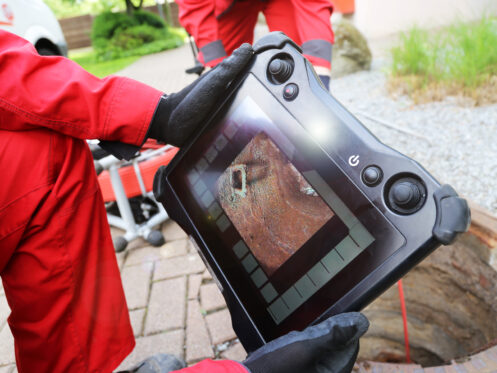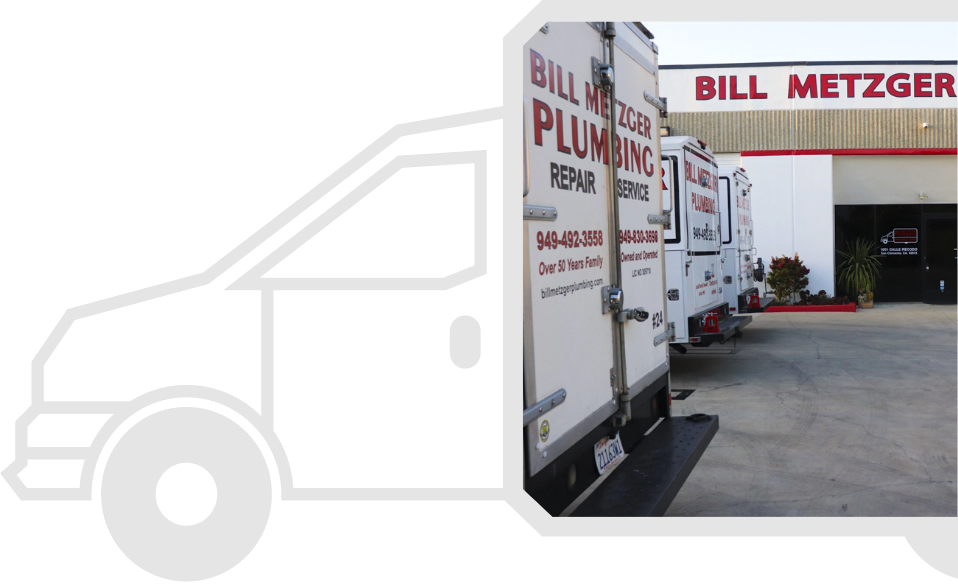Dealing with certain sewer line issues can be a nightmare because they can prevent you from using your plumbing until you get the problem fixed. Sewer line repair or replacement also tends to be expensive, and it’s definitely something you want to try to avoid. That’s why you should make sure to follow these tips so you can hopefully keep any major sewer issues from arising.
Be Careful About What You Flush Down Your Drains
The most important thing you can do to protect your sewer line is to be extremely careful about what goes into your drainage system. That means using a strainer in the kitchen sink to catch food scraps so they don’t go down the drain. It also means always disposing of fat, oil, and grease in the trash and never flushing anything other than urine, feces, and toilet paper down the toilet.
Fat, oil, and grease clogs, also known as fatbergs, are among the most common and potentially serious sewer issues. The problem is that all of these substances float on top of water and often don’t get fully flushed out of the sewer line. Instead, they tend to cling to the inside of the pipe and eventually create a thick, sticky coating. This coating causes other solids like food scraps and toilet paper to get trapped, creating an obstruction that ultimately leads to a massive blockage.
Toilet paper breaks up fairly well when flushed as long as you don’t use too much of it. The water easily carries it down through the sewer line. Items like wet wipes, cotton pads, and feminine hygiene products don’t break up and often get left behind in the sewer line where they then create an obstruction. That’s why there’s an extremely high risk of your sewer line clogging and backing up if you frequently flush any of these things.
Know How to Spot the Signs of Oncoming Sewer Issues
A clogged or broken sewer line will often end up backing up and result in sewage flowing out of some shower drains and floor drains on the lowest level of the house. A sewer line can suddenly break or collapse due to age, tree root intrusion, or the soil around it shifting, but it’s extremely rare that it will just suddenly get fully clogged. Instead, you’ll almost always see a few signs that indicate there’s an obstruction in the line, and it’s starting to flow poorly.
The most obvious signs are if all of your sinks and showers are draining slowly and your toilets frequently flush slowly or incompletely. You’ll also often hear a glugging sound as your plumbing fixtures drain. Another thing to watch for is if a toilet makes a burping sound when not in use. This sound comes from trapped air in the drain and sewer system occasionally escaping, and the only reason air ever gets trapped is if the sewer line is clogged or there’s an issue with the plumbing vent pipe that goes through the roof.
Don’t Plant Trees and Shrubs Near Your Sewer Line
Tree root intrusion is one of the most common causes of clogs and sewer line damage, especially in older homes. If you already have any large trees in your yard, there may not be much you can do to prevent roots from eventually getting in through the pipe joints or breaking a hole in your sewer line. If roots do get inside, they’ll quickly start growing and expanding as they feed on the waste and water that flows through the pipe. The roots then prevent toilet paper and waste from draining out of the line, resulting in it eventually clogging.
The fact that tree roots can cause such major sewer line issues is why it’s a good idea to be careful about where you plant any trees and shrubs and pay attention to what species you do plant. Some tree species mostly send their roots downward. Other species instead have fairly shallow root systems that can eventually expand out a huge distance from the trunk. Some of the species with the most invasive root systems that are most likely to damage your sewer line include willows, poplars, birch, elm, and silver maple.
The general rule is that you should never plant any trees or shrubs within 10 feet of your sewer line, but this is mostly for slower-growing species with less invasive root systems. Trees that grow faster and have root systems that spread out much further should never be planted within 20 feet of your sewer line.
Have Your Sewer Line Inspected and Cleaned Annually
Another thing that can help you avoid clogs and expensive sewer repairs is to have a professional inspect and clean out your sewer line every year. The most effective method for cleaning a sewer line is hydro jetting the pipe. A hydro jet machine produces a powerful stream of water that sprays out of a special nozzle. The plumber inserts the nozzle through the sewer line and the water essentially scours the inside of the pipe to blast away fat and scum. The plumber can also increase the pressure to break up stubborn clogs or slice straight through any tree roots.
The fact that hydro jetting fully cleans out a sewer line makes it an excellent preventative measure that greatly reduces the chances of clogs and other issues arising. The process is also completely safe and won’t cause any damage to your sewer line as long as you hire an experienced professional to perform it. That said, it’s not recommended if your sewer line is already compromised as it can cause further damage in this case. That’s why a plumber will usually perform a sewer line inspection first.
The way a plumber inspects a sewer line is by inserting a waterproof fiber optic camera into the pipe through the sewer cleanout. They can then view the video feed on a monitor and check for issues like obstructions, cracks, tree roots, etc.
If they spot minor damage like cracks or holes, they can often repair the sewer line using a method known as trenchless pipe lining. This involves inserting an epoxy-covered liner into the sewer line and then using an air bladder to inflate it. After the plumber cures the epoxy, it hardens and creates a solid bond between the liner and the existing pipe. The result of the process is that the liner basically creates a new pipe within the old sewer line and fills in all of the damaged spots. That way the line no longer leaks and no roots can start growing inside it.
One of the main benefits of pipe lining is that it can be done without digging up the yard. However, it generally won’t work if the sewer line has major damage. In this case, the only option is a full sewer line replacement.
Call Bill Metzger Plumbing Today for Top-Notch Plumbing!
If you have any drain or sewer issues in the San Clemente area, Bill Metzger Plumbing is here to help. We’ve been in business for over 50 years, and we’re dedicated to providing top-notch plumbing and sewer services. Whether it’s hydro jetting, pipe lining, or sewer line replacement, you can trust we’ll do quality work for a fair price. To get help dealing with any sewer issues you’re experiencing, contact us today.



 Today
Today 